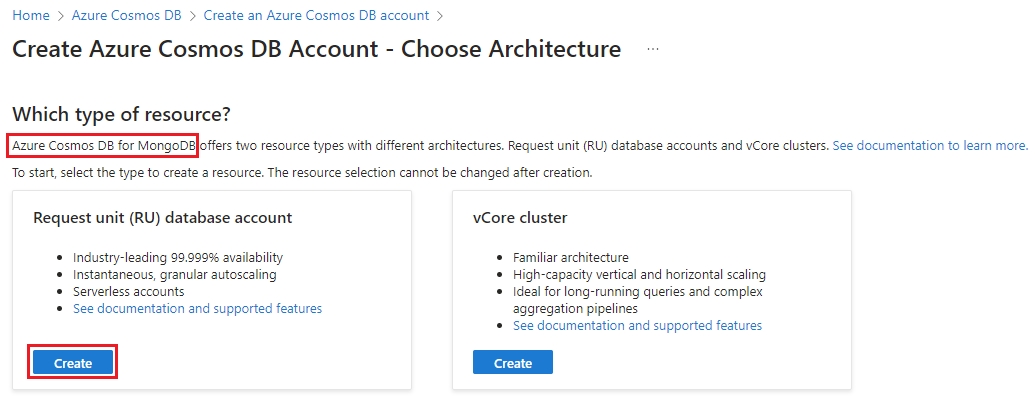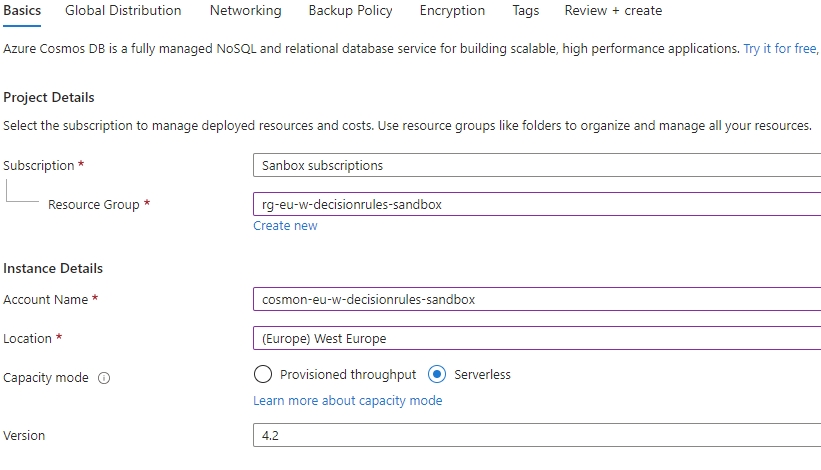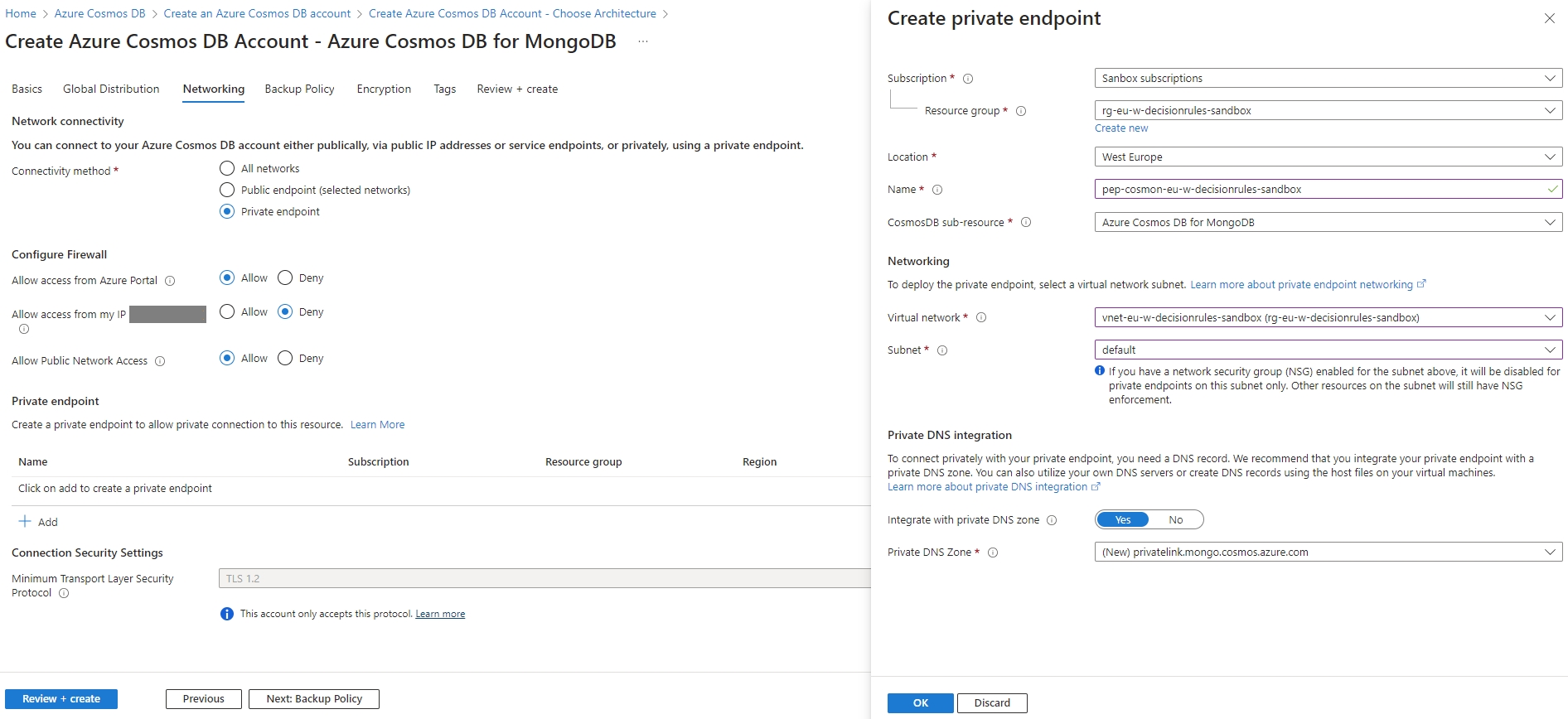Database - Azure CosmosDB
Following are steps for Azure Cosmos DB deployment for integration with DecisionRules.
After navigating to Azure Cosmos DB, hit Create. Choose Azure Cosmos DB for MongoDB. When prompted, select the Request unit (RU) based account. vCore cluster should also work but we've seen a number of issues arise when working with it.

Assign your resource group, give the account a name, choose a location and choose the Serverless capacity mode.

Set your Global Distributions settings, i kept mine default. Next go to the Networking tab and fill in the settings.
It is recommended to use a Private Endpoint connection but for hassle free non-Prod environment deployments a Public Endpoint is also an option.
Create your private endpoint, making sure it shares the same virtual network as your future server container.

For the Backup Policy, Encryption and Tags choose whatever fits your use-case. Review the account and create.
Where to find a connection string
After the database account has been created, navigate to Settings / Connection strings. The connection string can be found under Primary/Secondary connection string.
If you use Cosmos DB you need to specify the DB_TYPE environmental variable in your server container. More information here: Environment Variables
